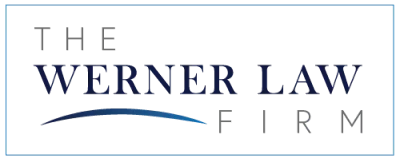
Menu

Trusts are not exclusive to the ultrarich but setting one up wisely may still require help from an estate planning professional. Even simple mistakes can end up costing your estate a fortune, and leave your family with much more stress and trouble than the whole thing might have been worth.
Unlike simpler documents, trusts require very specific language to work the way you intend them to, and while flexible, that flexibility comes at the cost of requiring intimate knowledge of local and federal estate, tax, and financial laws to make the most of a trust.
Let’s explore why trusts are complex, and yet accessible.
A trust is a legal construct or entity named, defined, and created through a trust document. Trusts have three important parties that each play a part in how a trust work.
The easiest way to remember how trusts work, and for what purpose, is to know that all a trust does is hold things in trust for another person. You’re basically creating a legal framework around which something is being put to the side for someone else, managed by a trusted person with a fiduciary duty to both you and the eventual beneficiary of what you’ve laid aside.
Trusts come in several different shapes and sizes, such as:
There are countless ways to write and rewrite a trust and define it after your own specifications. Most of the trusts mentioned above are not strict categorizations, so much as they are widely known specific use cases that a living trust may be created for.
This means that trusts can be made to fit pretty much whatever purpose you might have intended for them, down to protecting your assets from creditors, avoiding a conflict of interest by outsourcing your trust creation and management to someone who doesn’t report back to you, and even creating a trust solely to provide for a loved one with special needs.
The first and most important step when creating a trust is the trust document. This is by no means a simple document to fill out. It will define the trust’s contents and purpose, as well as how and when it might be dissolved.
As an example, a living trust document may be split into multiple sections and articles outlining the actual trust agreement, the identification or name of the trust, the purpose of the trust, and the definitions of terms utilized in articles henceforth. Trust agreements can be anywhere from a few pages in length, to becoming hefty behemoths of paperwork and increasing complexity. The larger the estate, the bigger the need for a comprehensive trust.
Trust documents aren’t written out of thin air, of course. While there are templates and formal structures that bear similarities from case to case, any given professional will need to craft a trust with its own unique specifications catering to your needs and circumstances.
To that end, a big part of creating your first trust will be getting together with a trust professional, and spending a long time pouring over the basic structure and the details of how and when you would like to establish your trust, to what end, for whom, and with what.
Once the trust document has been formulated, it’s time to fund it. A trust consists of whatever is added into it, and while an asset list can help summarize the contents of the trust, it is up to the grantor to go through the steps of renaming every item added to the trust to ensure it belongs to the trust, rather than the grantor themselves. That means writing deeds, amending ownership documents, and double-checking for beneficiary designations.
Things like life insurance policies and select bank accounts can have beneficiaries attached to them so that when you die, these assets are automatically transferred to your loved ones without worry.
But if your estate is already quite large, the sizeable payout of a life insurance policy or the remainder of your bank account may be enough to exceed the exception limit for the hefty federal estate tax. An irrevocable trust can be written to be funded with these accounts, thus reducing the size of your taxable estate.
Once a trust is defined, notarized, and funded, it needs to be managed. Finding the right trustee for the job can be almost as difficult as finding the right professional to draft your trust document.
You need to have the utmost trust in your trustee. While they are bound by fiduciary duty, you need still be sure of their competence and better judgment in the years after your passing. It will be up to them to manage the contents of the trust and ensure that it continues to grow or retain value over time, as it is dissolved or distributed after death.
Depending on what you intend to accomplish with your trust, a trustee’s job may last well over a decade after you pass away. For longer trusts, you will have to consider the possibility of assigning secondary trustees to take over should your primary choice pass away as well, or decline.
There are many moving parts to consider when creating a trust.
Professional help does not just alleviate the worry that comes with unverified templates pulled off the internet, or a trust written up via a free online course, but it also comes with the guided experience and specific expertise you might need to help you through the hoops and loops of getting a successful trust up and running.
Founded in 1975 by L. Rob Werner and serving California for over 48 years, our dedicated attorneys are available for clients, friends, and family members to receive the legal help they need and deserve. You can trust in our experience and reputation to help navigate you through your unique legal matters.
Whether you need help creating a living trust or navigating probate, our living trust law firm's compassionate team of estate planning lawyers and probate lawyers are here to help you and ready to answer your questions.
Our goal is to make your case as easy as possible for you. Hiring a lawyer can be a daunting task, but it doesn’t have to be. From the moment you contact our firm, through the final resolution of your case, our goal is to make the process easy and understandable. We cannot change the fact that probate is a long and complicated process, but through our Werner Law Firm Difference, we strive to go out of our way to keep you informed of your case through every step of the way. We are constantly refining our processes and procedures for a more streamlined and calm client experience. Our goal is to have you feel like a burden was lifted from your shoulders, and that we made the whole process an easy one
If you're dealing with a legal matter, we urge you to schedule a free initial appointment today and join the many satisfied clients who have contacted Werner Law Firm.

23 Corporate Plaza Dr., Suite 150
Newport Beach, California 92660
